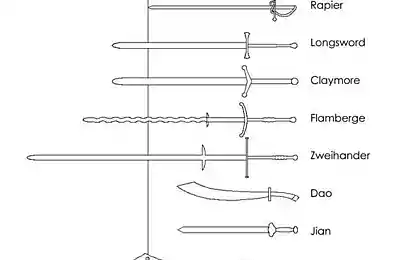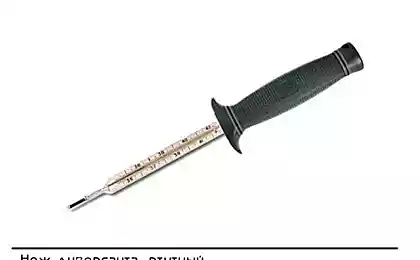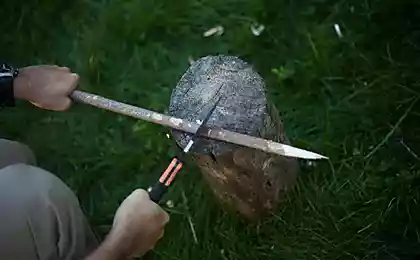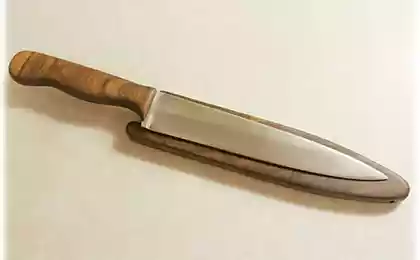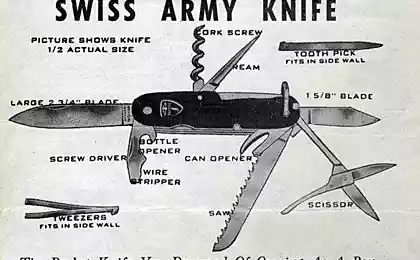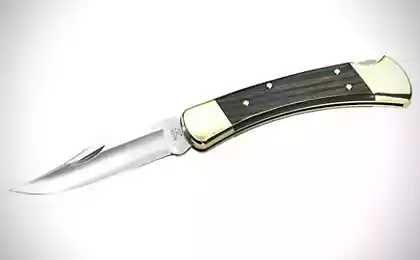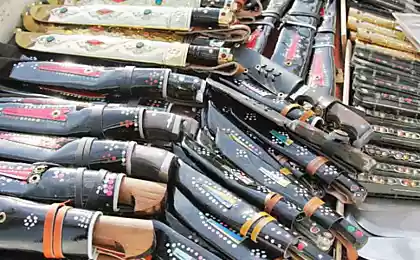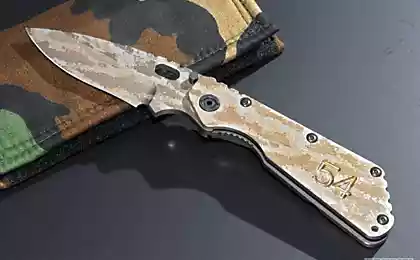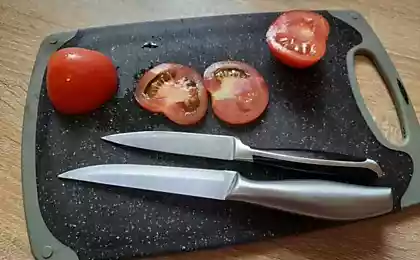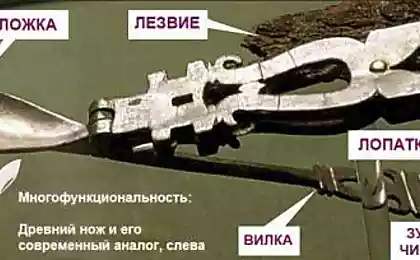245
The Crom of the North: the history of the knife, which is 10 thousand years old
A handmade knife is not only unique, but also extremely useful in the wild. The craftsmen spend several months making one knife. The production process includes forging, blade forming. The famous Scandinavian knives, which in everyday life were called “Finka”, are the reference knives for hunters and anglers and it is deservedly.
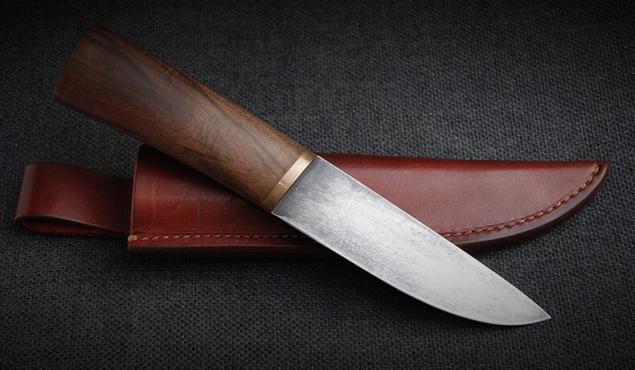
The history of the Finns begins before the Iron Age. The first knives with blades made of bone or stone date back to 8000 BC and have much in common with current models. In Finland, this knife is called “puukko” (puukko) from the word “puu” (tree), which means “knife with a wooden handle”.
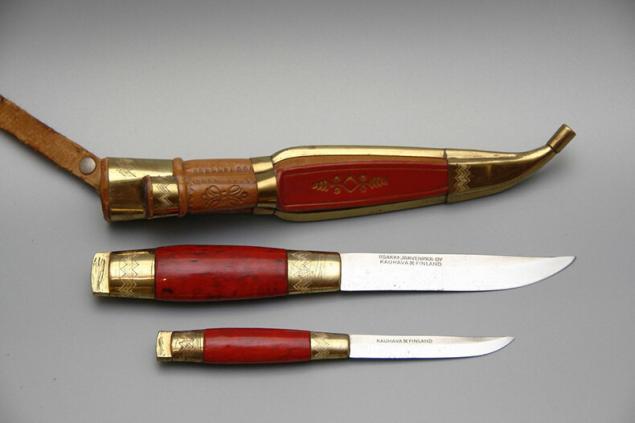
The roots of the “Fink” should not be found in Finland, but in modern Sweden. It was there that the first forges and the first knives appeared, their characteristics similar to the current ones. In the XII century in the Swedish areas of Scandinavia was a knife called "pook". The Suomi blacksmiths only picked up the tradition and gave knives the features that now distinguish Scandinavian knives.
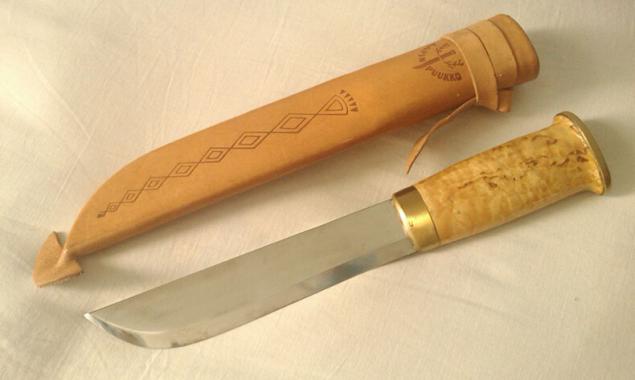
The scabbards of Finnish knives begin to decorate with a darkened pattern, paint in red and fasten engraved brass plates. What’s more, the knife was hung on a chain, swinging freely when walking to draw attention to its owner. The handles of Finnish knives were made of wavy or Karelian birch, and later from birch bark.
The handle of this puucco is not confused with anything: it almost always has a round, less often slightly flattened barrel shape.
The handle of a Finnish knife is most often made of hardwood wood and is planted on a cutting without rivets or screws. In the fishing Puucco knife master so selects the ratio of the weight of the blade and handle that, even falling into the water, the knife does not sink, but sticks in the water float.
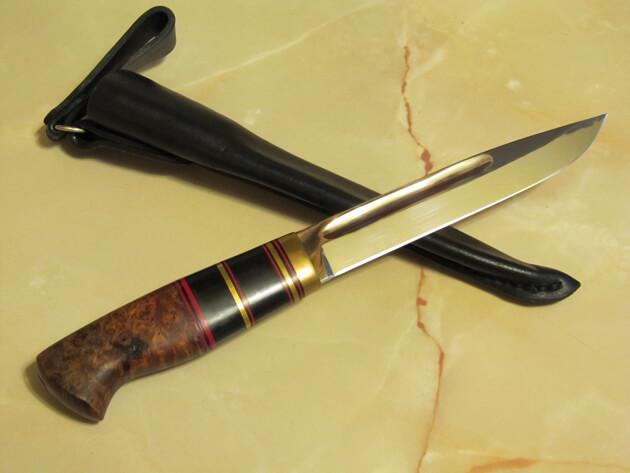
The Finnish knife is not a weapon, but a tool of labor. Therefore, a real Finnish knife in its modern form does not have a drop of aggression in appearance. The reason for this lies in the peculiarities of the Finnish character. While the neighboring tribes fought fiercely among themselves for the redistribution of the land, the Finnish people retreated into the forests to the north until they were on the edge of the earth.
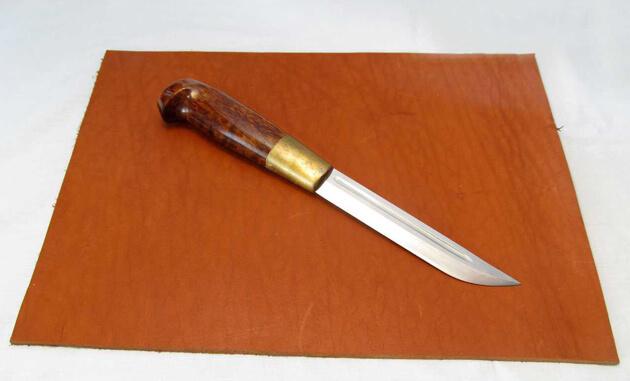
Industrial production of "finks" began in Finland in 1830, when specialists in the manufacture of knives from England and Sweden were invited to the factory for the production of metal products Fiskars. They were the best professionals of their time. Many Finnish craftsmen learned from them, who then spread their new knowledge throughout Finland. Most of the samples of kitchen knives, made according to the type of Finnish, served as a model for many later manufacturers of "finoc".
Read also:
The Phenomenon of Time and the Mirrors of Kozyrev
After this discovery, you will no longer want to brush your ears with cotton swabs!
P.S. And remember, just changing our consumption – together we change the world!
Join us on Facebook, VKontakte, Odnoklassniki
Source: dnpmag.com/2016/05/07/kromka-severa/

The history of the Finns begins before the Iron Age. The first knives with blades made of bone or stone date back to 8000 BC and have much in common with current models. In Finland, this knife is called “puukko” (puukko) from the word “puu” (tree), which means “knife with a wooden handle”.

The roots of the “Fink” should not be found in Finland, but in modern Sweden. It was there that the first forges and the first knives appeared, their characteristics similar to the current ones. In the XII century in the Swedish areas of Scandinavia was a knife called "pook". The Suomi blacksmiths only picked up the tradition and gave knives the features that now distinguish Scandinavian knives.

The scabbards of Finnish knives begin to decorate with a darkened pattern, paint in red and fasten engraved brass plates. What’s more, the knife was hung on a chain, swinging freely when walking to draw attention to its owner. The handles of Finnish knives were made of wavy or Karelian birch, and later from birch bark.
The handle of this puucco is not confused with anything: it almost always has a round, less often slightly flattened barrel shape.
The handle of a Finnish knife is most often made of hardwood wood and is planted on a cutting without rivets or screws. In the fishing Puucco knife master so selects the ratio of the weight of the blade and handle that, even falling into the water, the knife does not sink, but sticks in the water float.

The Finnish knife is not a weapon, but a tool of labor. Therefore, a real Finnish knife in its modern form does not have a drop of aggression in appearance. The reason for this lies in the peculiarities of the Finnish character. While the neighboring tribes fought fiercely among themselves for the redistribution of the land, the Finnish people retreated into the forests to the north until they were on the edge of the earth.

Industrial production of "finks" began in Finland in 1830, when specialists in the manufacture of knives from England and Sweden were invited to the factory for the production of metal products Fiskars. They were the best professionals of their time. Many Finnish craftsmen learned from them, who then spread their new knowledge throughout Finland. Most of the samples of kitchen knives, made according to the type of Finnish, served as a model for many later manufacturers of "finoc".
Read also:
The Phenomenon of Time and the Mirrors of Kozyrev
After this discovery, you will no longer want to brush your ears with cotton swabs!
P.S. And remember, just changing our consumption – together we change the world!
Join us on Facebook, VKontakte, Odnoklassniki
Source: dnpmag.com/2016/05/07/kromka-severa/
